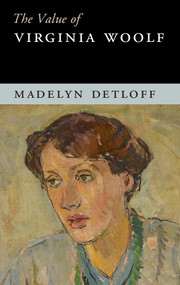3 - Interdependence: Pattern and Precarity
Published online by Cambridge University Press: 05 March 2016
Summary
Is it possible to cultivate virtuosity (aretē) without succumbing to the kind of arrogance that leads to self-interestedness? Can one strive to be exceptional without falling prey to elitism? These are questions that circle back to the questions of value that Barbara Herrnstein Smith contemplated, for if excellence (aretē) is quality one possesses, then it is something that is intrinsically valuable. But if excellence is a practice that involves negotiation – as value does in Smith's theory – then it is social and relational, rather than intrinsic. This relationality is highlighted in another key Woolfian motif: interdependence. Woolf often alludes to social interdependence through the metaphor of the “pattern” or, as in the case of her metaphor for fiction in A Room of One's Own, through the image of a web (AROO 41).
For example, in one of the most cited passages from A Sketch of the Past, Woolf comments on her capacity for making sense of experience through writing:
Perhaps this is the strongest pleasure known to me. It is the rapture I get when in writing I seem to be discovering what belongs to what; making a scene come right; making a character come together. From this I reach what I might call a philosophy; at any rate it is a constant idea of mine; that behind the cotton wool is hidden a pattern; that we – I mean all human beings – are connected with this; that the whole world is a work of art; that we are parts of the work of art.
There are many ways to read Woolf's ecstatic insistence on connectedness. Perry Meisel writes of Woolf's repeated imagery of patterns, fabrics, and networks: “These figures or, really, metalanguages, are often organic ones, and suggest a vision of life as a pattern of connections ‘drawn out’ on ‘every leaf on the trees.’” Other critics, among them Julie Kane and Donna Lazenby, interpret the high premium Woolf places on interdependence as a form of mysticism – an emptying of the self and appreciation of our apparent oneness with the world. Yet others, including Gillian Beer, Holly Henry, and Paul Tolliver Brown, show the influence of scientific discourse – Darwinism, astronomy, and quantum physics – on Woolf's conception of the “pattern” behind the “cotton wool” of everyday existence.
- Type
- Chapter
- Information
- The Value of Virginia Woolf , pp. 46 - 70Publisher: Cambridge University PressPrint publication year: 2016

